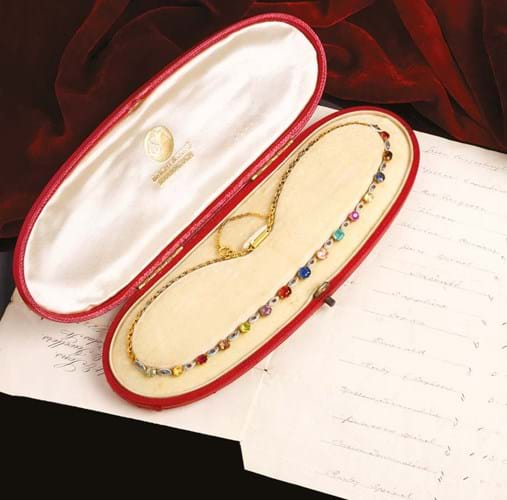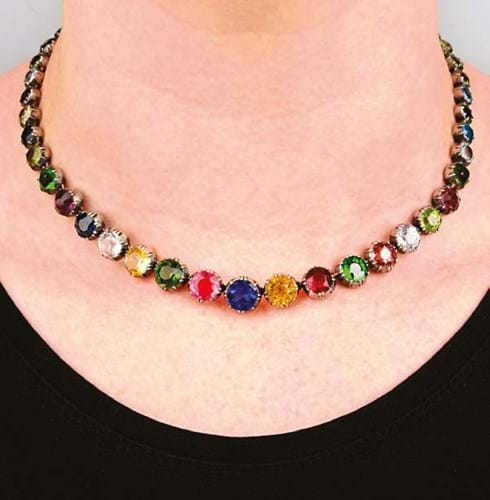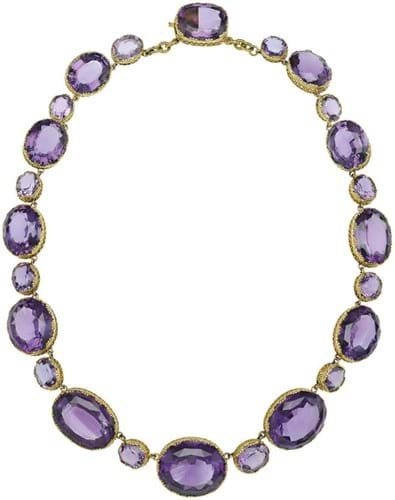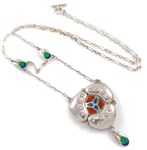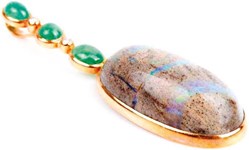It features 15 different gemstones identified as green chrysoberyl, yellow sapphire, red jargoon, zircon (brown), olivine (Russian), puce spinel, jacinth, sapphire, topaz (light medium orangey brown), emerald, ruby (Ceylon), yellow tourmaline, peacock spinel, brown tourmaline and ruby spinel. Each was interspersed with a gem-set enamel lozenge.
The necklace comes with a fitted case for Bright & Sons of Scarborough and original paperwork dated 1889 from the firm to one Mrs Eastwood identifying the stones and listing their cost prices.
A note reads: ‘It has been in hand longer than usual owing to the collection of the stones over which Messrs Bright have given every attention.’
Fellows specialist Ben Randall says: “It is intriguing to see how different gem names have evolved and how the different gems were valued at the time, the gorgeous central sapphire costing almost 10 times as much as the other gems.”
Offered with an estimate of £2500-3500 at the sale on March 25, it hammered at £7100.
It was possible to achieve the same aesthetics without the same level of expenditure. A popular lot in Fellows’ March sale was a 19th century parure of harlequin paste jewellery set in silver and gold.
Comprising a graduated rivière necklace, earrings and pendant set with coloured glass, this would have cost a fraction of the price at the time. Hugely collectable today, the lot made more than 10 times the low estimate at £4500.
Multi-gem necklaces, perfect for the enquiring 19th century mind, were a feature of the Georgian and Victorian period – a spectacular example was sold by Woolley & Wallis in 2017 for £37,000. That rivière and cross pendant was engraved to the back of each gold collet with the name of the encased stone and its weight. Having had the stones certified for sale, the auction house discovered four of the stones (three peridots and a sapphire) were incorrectly labelled when the necklace was made c.1800.
Amethyst rivière necklaces are far more common – with most selling for £1000-5000 depending on quality. However, attracting interest for its form, stones and aristocratic provenance, the example offered at Dix Noonan Webb (24% buyer’s premium) in London on March 16 sold at £7500 (estimate £1500-2000).
While assuming the typical rivière form, it is composed of large graduating mixed-cut amethysts, spaced by smaller oval stones of paler hue, each mounted in beadwork settings.
Formerly the property of Marie-Louise, Countess Manvers (1889-1984) and offered for sale by her goddaughter Lady Rozelle Raynes, it sold to an American buyer via the internet, who outbid strong trade interest.
The top lot of the day, estimated at £8000- 12,000, was a Victorian diamond fringe necklace c.1890, which, although not presented with its original frame, could also be converted into a tiara. It was bought by a member of the London trade for £19,000 – almost double its pre-sale high estimate.


